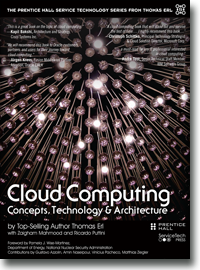Cloud Computing Patterns, Mechanisms > Basics > Data Center Technology > Storage Hardware
Storage Hardware
Data centers have specialized storage systems that maintain enormous amounts of digital information in order to fulfill considerable storage capacity needs. These storage systems are containers housing numerous hard disks that are organized into arrays.
Storage systems usually involve the following technologies:
- Hard Disk Arrays – These arrays inherently divide and replicate data among multiple physical drives, and increase performance and redundancy by including spare disks. This technology is often implemented using redundant arrays of independent disks (RAID) schemes, which are typically realized through hardware disk array controllers.
- I/O Caching – This is generally performed through hard disk array controllers, which enhance disk access times and performance by data caching.
- Hot-Swappable Hard Disks – These can be safely removed from arrays without requiring prior powering down.
- Storage Virtualization – This is realized through the use of virtualized hard disks and storage sharing.
- Fast Data Replication Mechanisms – These include snapshotting, which is saving a virtual machine’s memory into a hypervisor-readable file for future reloading, and volume cloning, which is copying virtual or physical hard disk volumes and partitions.
Storage systems encompass tertiary redundancies, such as robotized tape libraries, which are used as backup and recovery systems that typically rely on removable media. This type of system can exist as a networked IT resource or direct-attached storage (DAS), in which a storage system is directly connected to the computing IT resource using a host bus adapter (HBA). In the former case, the storage system is connected to one or more IT resources through a network.
Networked storage devices usually fall into one of the following categories:
- Storage Area Network (SAN) – Physical data storage media are connected through a dedicated network and provide block-level data storage access using industry standard protocols, such as the Small Computer System Interface (SCSI).
- Network-Attached Storage (NAS) – Hard drive arrays are contained and managed by this dedicated device, which connects through a network and facilitates access to data using file-centric data access protocols like the Network File System (NFS) or Server Message Block (SMB).
NAS, SAN, and other more advanced storage system options provide fault tolerance in many components through controller redundancy, cooling redundancy, and hard disk arrays that use RAID storage technology.
